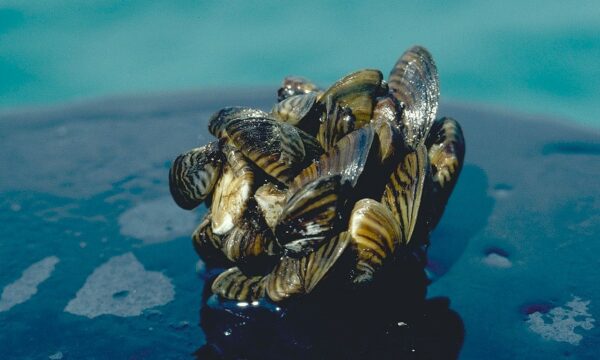
American Red Swamp Crayfish; Photo Credit © Shutter stock
Red swamp crayfish (Procambarus clarkii), often known as the Louisiana crawfish are staple part of Cajun cuisine. However, new research published in Conservation Biology has found that the highly invasive crayfish allows mosquitoes to thrive in waterways, therefore making it more likely to increase the risk of mosquito-borne diseases. Native to the murky marshes of south-eastern United States, red swamp crayfish are now widely distributed across the globe as an invasive species. More detrimental than the benefits it offers in making cuisine, red swamp crayfish has been found to threaten native species and cause ecological disorder as well as carry potentially deadly parasites like the rat lungworm.
“It can damage infrastructure like earthen dams by its burrowing,” says Eric Larson, a Biologist from the University of Illinois, who was not involved in the study, “and it often out-competes and displaces native crayfish.
Lead author on the study, Gary Bucciarelli, a research scientist at the University of California, together with his team had been trapping and removing the crayfish in California’s Santa Monica mountains when they discovered a large number of red swamp crayfish in a stream that also contained a lot of mosquito larvae but very few dragonfly nymphs. This caught the attention of Gary and his team, knowing fully that dragonfly nymph are natural predators of mosquito larvae. This intriguing observation prompted the examination into researching the association among these three aquatic species.
Gary Bucciarelli and his team took a closer look at thirteen streams in that area and observed that five of the streams had no record of red swamp crayfish while the remaining eight harboured the invasive crayfish. As they suspected, streams without crayfish had more dragonfly nymphs than mosquito larvae while those with crayfish had more mosquito larvae than dragonfly nymphs.
To satisfy the inquisitiveness of how crayfish might be harbouring mosquito larvae, researchers duplicated the natural habitat of these fauna by setting up three tanks for observation. Mosquito larvae were found to be consumed by dragonfly nymphs in the tank where they both co-existed. In contrast, dragonfly nymphs lost their hunting prowess on mosquito larvae when housed with crayfish in another tank. Researchers further observed that, the dragonfly nymphs appeared terrified by the crayfish, allowing more mosquito larvae to grow.
This experiment provides better insight to public health physicians by revealing what goes on outside human patients when it comes to disease outbreaks. Chelsea Wood, a disease ecologist at the University of Washington commented on the significance of the research to public health, as the discovery allowed physicians to understand the origins of disease outbreaks arising from ecological interactions.
Contrary to the fascinating inferences drawn from the experiment, Wood stated that the situation is not always the same, backing up her statement by referencing the interaction of invasive crayfish and fresh water snails recorded in Kenya in 1990s. In this case, the invasive crayfish rapaciously preyed on the fresh water snails, which are hosts of the vector causing schistosomiasis – a devastating disease that afflicts more than 200 million people across the globe.
In addition to the information above, Bucciarelli stressed the impact of climate change in exacerbating the problems confronting public health in regards to ecological interactions. He stated to National Geographic that “years with high downpour normally works against disease build up by washing away crayfish from the watershed. Thus, a change in climate leading to drought condition might revamp the interaction among this invasive aquatic species.”
To read more on this, kindly follow the links below:
- National Geography Society
- Southeastern Wisconsin Invasive Species Consortium
- Invasive Species Compendium
Sunmbo Olorunfemi is a graduate of Sustainable Agriculture and Food Security and currently working as an intern with the Plantwise Knowledge Bank.
1 Comment
Leave a Reply
Related News & Blogs
5 invasive species to look out for in the US
The presence of invasive species poses a significant hazard to many native environments and species found in the United States (US). They lead to significant expenses in agriculture, forestry, and recreation. Once out of control, they can destroy entir…
26 February 2024





Hello,
In the last message you wrote “that dragonfly nymph are natural invaders of mosquito larvae”
I presume you meant “that dragonfly nymph are natural predators of mosquito larvae”
I recommend to correct this as it might confuse some readers.
Best regards,
Jean-Marc
ד”ר ז’אן-מארק דופור-דרור אקולוג מחקרים וייעוץ באקולוגיה יישומית שחר 1, דירה 6 ירושלים 96263 טלפקס: 02-6523963 נייד 054-5341513
jmdd@netvision.net.il
Jean-Marc Dufour-Dror (Ph.D) Ecologist Research & Consultancy in Applied Ecology Shahar st. Bldg 1, Appt 6 Jerusalem 96263, ISRAEL TelFax: 02-6523963 Mobile: 054-5341513 jmdd@netvision.net.il
We are drowning in information, while starving for wisdom (E.O. Wilson)